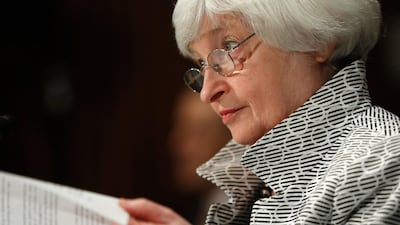The US Dollar Index continued consolidation above 93 levels through August as risk appetite waned and volatility returned to the markets. The VIX index, a measure of the volatility in US equity markets, peaked at three month highs as both US domestic and geopolitical developments with rogue state North Korea continued to erode risk moods.
The US data docket has been highly supportive of the dollar's recent consolidation – the past two weeks have seen a run of improving US figures.
The crucial inflation index showed that prices increased year-on-year in July to 1.7 per cent versus a previous reading of 1.6 per cent. Core prices, less food and energy also inched higher to 1.7 per cent, closer to the Federal Reserve target band of 2 per cent. But perhaps the shocker was the much stronger than expected US retail sales data which showed that sales increased month-on-month to 0.6 per cent, up from an expected 0.4 per cent. Retail sales, less gas and auto, also improved.
The improving numbers – which form the foundation of US consumer spending, which in turn forms a large foundation of the overall US GDP reading – sparked a fresh round of dollar buying on market expectation that the Fed would be forced to adopt a more hawkish monetary policy stance.
All eyes will turn to the Jackson Hole Economic Symposium, taking place on August 24 to 26, where several of the top central bankers are expected to shed more light on their respective monetary policies. Fed chairwoman Janet Yellen is due to speak and markets are expecting a more optimistic Fed based on the recent run of improving US numbers.
The symposium will be followed by the US GDP report (expected at 2.6 per cent) and consumer spending data (previously 2.8 per cent) which are due out on August 30. This will be followed by the monthly US payroll report, due out on September 1, which is expected to show that 185,000 new jobs were added in August.
Expect to see volatility remain high in the US dollar and its respective asset classes – with the departure of chief White House strategist Steve Bannon highlighting the savage state of affairs in the White House, coupled with key Fed speakers taking the stage this week – the Dollar Index will continue to hold above 93 levels with initial resistance coming in at 93.76 levels.
–––––––––––––––
Read more:
Dollar fall halts on improved US data but sentiment is still bearish
Pressure mounts on the US dollar
–––––––––––––––
Gold will be an interesting asset class in the weeks ahead – the Dubai Gold and Commodities Exchange (DGCX) gold contract was trading 1.5 per cent higher in August and supported by the risk off mood driving markets in the past two weeks.
While the recent run has seen a fresh round of speculative buying coming in, it seems difficult for the yellow metal to make a clear break of $1,300 levels and this remains the top end resistance through the initial weeks of September. Expect initial support to kick in at $1,256 levels in the precious metal, which is the top end of the ideal buying channel for gold – between $1,240 to $1,256 levels for a medium-term view.
Another key story to watch for in the weeks ahead will be the performance of the British pound. Coming under pressure, DGCX's pound-US dollar contract was trading 2.6 per cent lower in August.
The effects of last year's Brexit vote is starting to reflect on the UK data docket and the most recent Bank of England minutes showed shifting sentiment in the central bank. While this move below 1.29 levels was largely expected, albeit very delayed, technically we expect to see a further move downwards towards 1.2626 levels. Unless short positions were built up above 1.30, it would be wise to wait for further price action in the pound. The GBP/USD cross is trading firmly in the middle of a daily Ichimoku cloud – and has also has broken into a cloud on the monthly charts which would suggest a no trade zone.
DGCX’s crude oil contract was also weaker in August, trading 3.2 per cent lower on the month. With larger than expected drawdowns in supply inventories, long positions in crude seem favourable at 47.50 levels. Technically, 48.30 represents the 200-day exponential moving average which would need to hold before exposing our lower end target.
Gaurav Kashyap is a market strategist at EGM Futures


